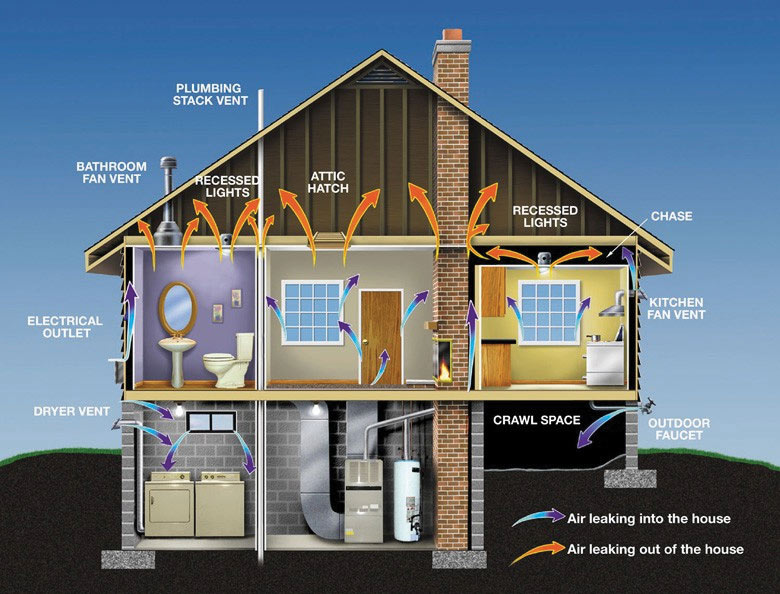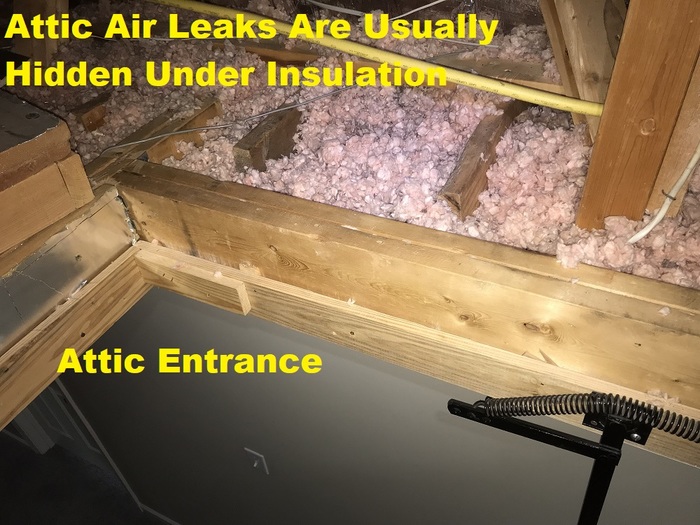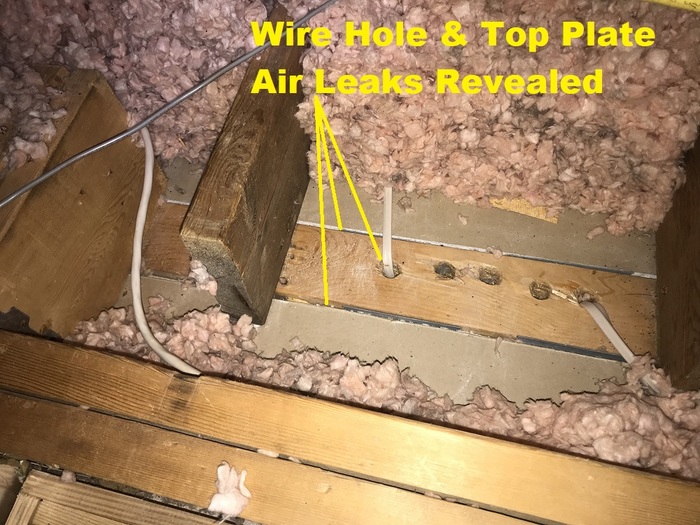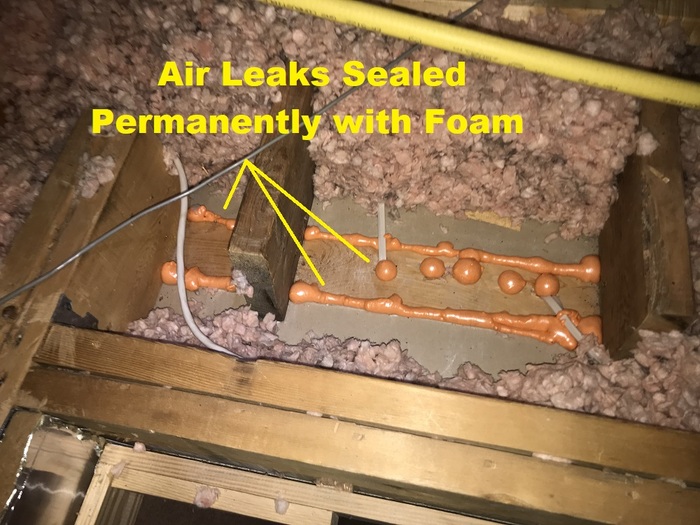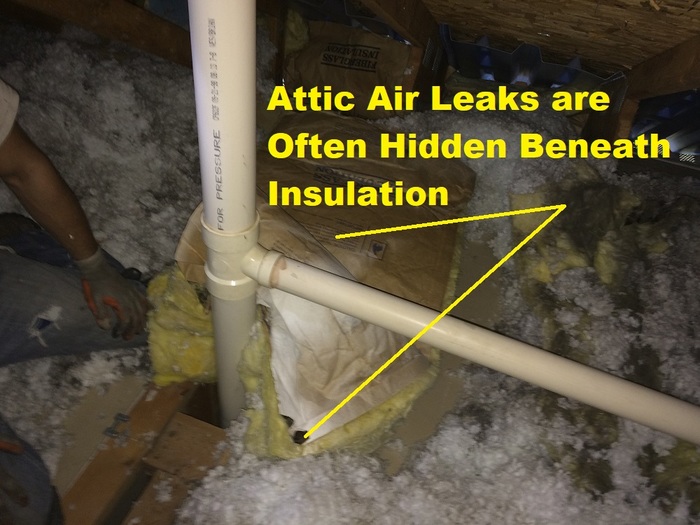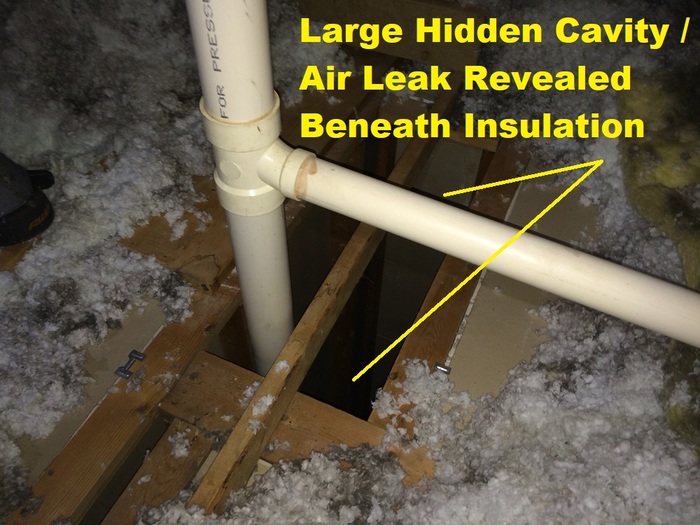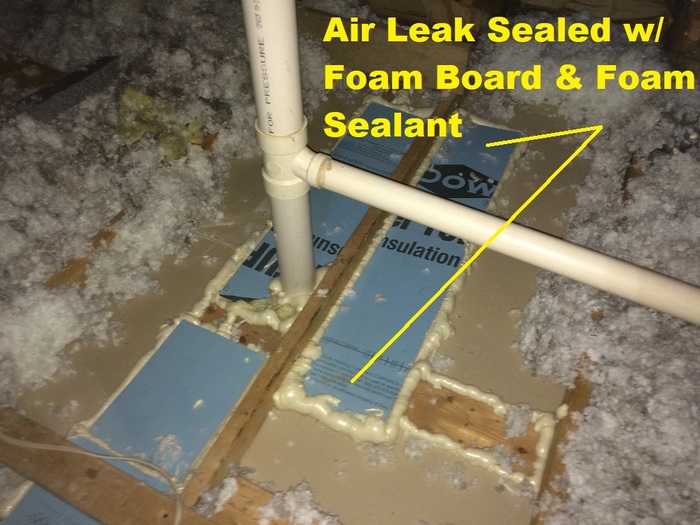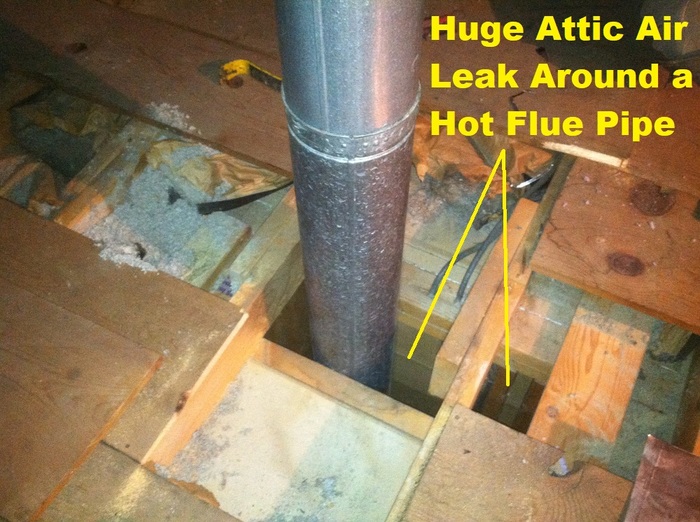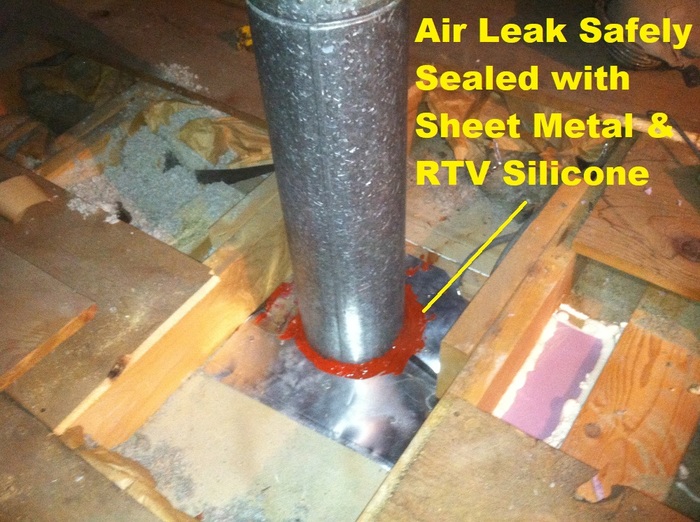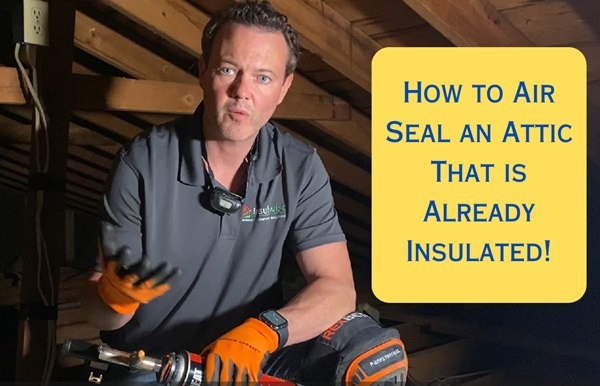Why is Sealing Your Home’s Air Leaks Important?
That According to the Canadian National Research Council, Air Leakage is Responsible for 30-50% of a Typical Homes Energy Loss?!
What is Air Leakage?
- Air Leakage is when the heated or cooled air inside your home escapes to the outside, and outside air infiltrates into your home.
- This diagram from the US Department of Energy shows how air leakage occurs. The process of heated air escaping the top of your home as colder, outside air is sucked in around your foundation is called Stack Effect, and stack effect is what drives air leakage.
- When you feel a cold draft in your home, you are fact feeling air leakage!
What is Air Leak Sealing? Why is it Critical?
- On a cold day, would you think twice before shutting an open window? Of course not! The concept of air leak sealing your home is no different
- Air leak sealing is the ‘sealing up’ of cracks, holes, and seams that exist in your home’s ‘air barrier.’ Your air barrier is what keeps the air conditioned by your furnace and air conditioner from escaping your home!
- Air leak sealing measures are vital. Effectively air sealing your home could improve its heating and cooling efficiency by 10-20% alone (and that is before adding additional insulation)!
First Time Hearing About Air Leaks?
Click here to see what the Residential Energy Service Network (RESNET) has to say about air leakage in homes and the importance of sealing air leaks.
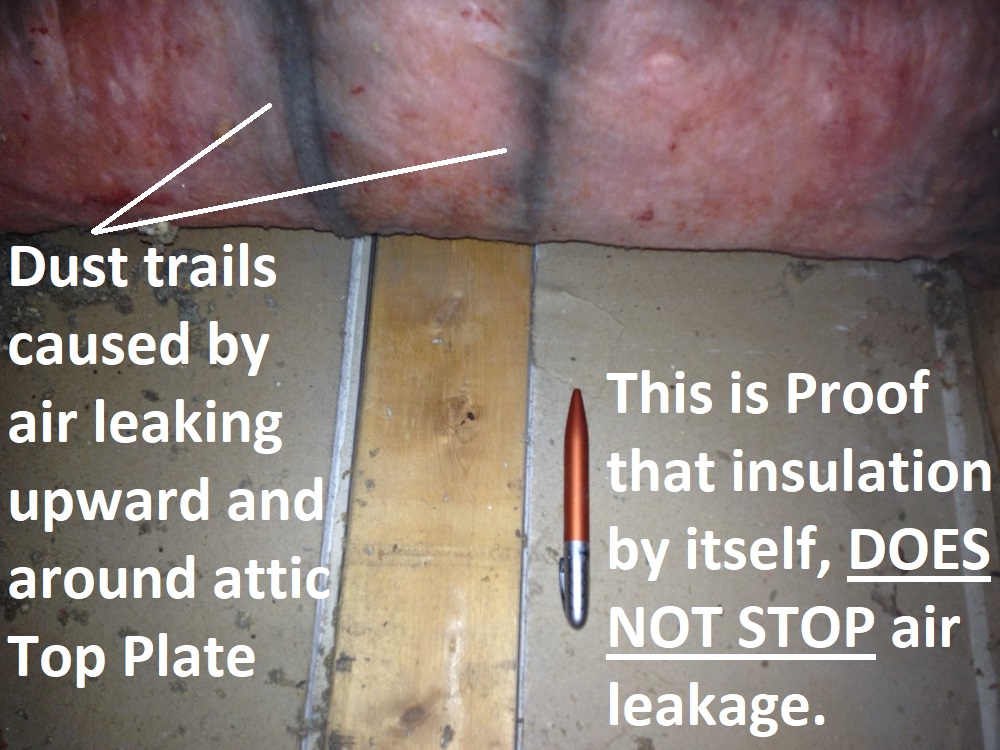 Will Insulation Stop Air Leaks?
Will Insulation Stop Air Leaks?
- We’ll make this one simple. NO! Insulation alone does not stop air leakage. Air from your home moves right through it.
- What insulation does do is filter the air as it moves by. That is why you’ll often see black dust streaks like these around attic air leaks.
- In this photo, a piece of fiberglass was laying over a top plate on an attic floor. As warm air from the home escaped upward and around the top plate, the dust in it got trapped in the fiberglass.
- The dust streaks in this photo prove that insulation DOES NOT STOP AIR LEAKS.
- If a contractor tells you differently, he is incompetent. And you should hire someone else who understands and uses modern methods.
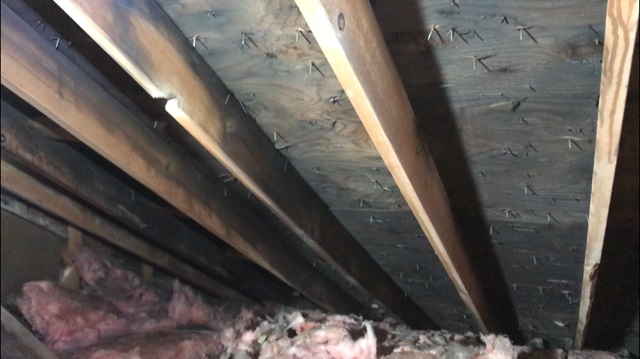 What Can Happen if I Don’t Air Seal my Attic?
What Can Happen if I Don’t Air Seal my Attic?
- If you do not air seal your attic before insulating it, a major problem can occur. A MOLD bloom in your attic.
- The added insulation will reduce heat loss from your home. This will make your attic, and roof, colder.
- However — your home will still be leaking warm air and moisture into your attic. This moisture is now likely to condense on the underside of your colder roof.
- The result here is often attic mold. The moral of the story is, if you are going to insulate your attic, you MUST first air seal it.
Why Does my Home Become so Dry During the Winter?
- Air leakage in your home negatively affects your comfort in several ways. First you feel it in the form of drafts and cold spots on cold days.
- Secondly extreme dryness in your home during winter is often caused from air leakage. Cold outside air is often very dry because cold air cannot hold as much moisture as warm air. When cold, low relative-humidity air infiltrates your home through leaks, it mixes with the warm, higher relative-humidity air inside and effectively dries it out. This continual process makes many homes unpleasantly dry during the winter!
Why Can’t I See These Air Leakage Sources?
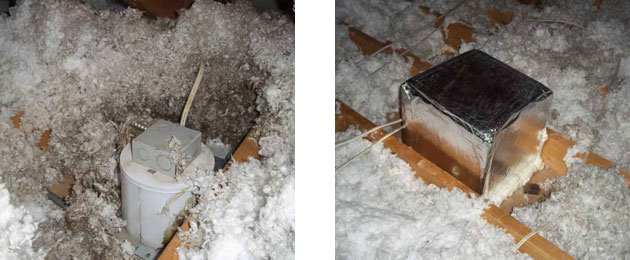
- Air leakage sources are typically hidden beneath insulation or in places that are difficult to reach in your attic.
- Air leaks proliferate in attics and basements, wasting massive amounts of energy. They come in many forms: electric wires, plumbing pipes, recessed lights, attic ladders, basement rim joists, etc.
- Most attics possess hidden air leakage sources that when combined would equal a medium sized window left open!
If You’d Like to See How Insulwise Locates and Seals Air Leaks in Attics That are Already Insulated, Click the Image Below!
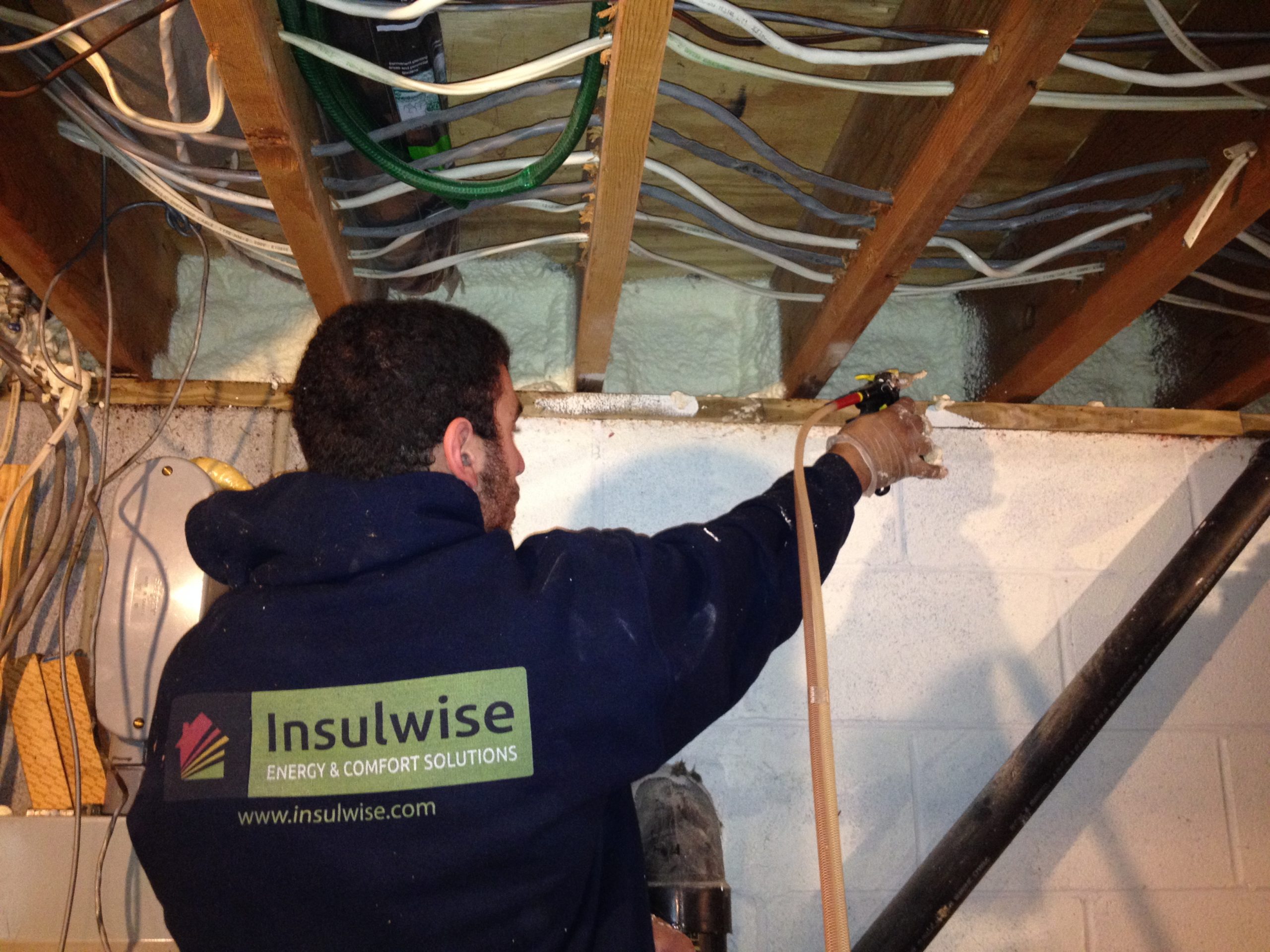 What About Air Leakage Issues in Basements?
What About Air Leakage Issues in Basements?
- Basements contain important air leakage sources. Outside air infiltrates where the sill plate sits on the foundation wall and around the rim joists.
- During winter, cold air seeps into the home through this area as warm air escapes from the top of the home.
- Typically rim joists and sill plates are sealed with spray foam.
But the other guy said air sealing was a waste of time?!
- If another insulator tells you that air sealing is a waste of time, what he’s really saying is that he is either completely ignorant of modern building science principles or that his crew is too unreliable or lazy to do the actual work.
- Simply put, the forces behind stack effect will cause your home’s conditioned air to leak directly through blown or rolled insulation. Before re-insulating, air leaks MUST be sealed.
- Don‘t just take our word for it. Find out what the Department of Energy has to say about the benefits of air sealing.
Why On Hot Summer Days is my Upstairs Much Hotter Than Downstairs?
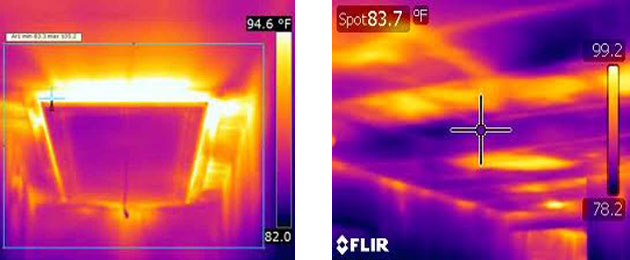
- On hot summer days, your attic can heat up to nearly 130 degrees. If your attic is insufficiently insulated, you will start to feel this heat coming into the upper floor of your home by late morning / early afternoon.
- If your attic was insulated with rolled fiberglass batts or blown fiberglass, it is likely there are substantial gaps around framing, wires, plumbing pipes, etc. This will cause ‘hot spots’ on the ceiling, as shown on the second infrared image.
- By having Insulwise properly air seal and re-insulate your attic with blown cellulose insulation to the recommended R-49, your home will become much cooler on hot days. You will also see your A/C bills drop substantially!
- Another reason for this is an under-insulated attic, but the two go hand in hand.

 Two Story Colonial Home
Two Story Colonial Home 1950’s Ranch Style Home
1950’s Ranch Style Home Two Story Contemporary Home
Two Story Contemporary Home Modern Patio Home
Modern Patio Home Three Story Home
Three Story Home Cape Cod Home
Cape Cod Home Attic Insulation
Attic Insulation Floor Insulation (Garage Ceiling)
Floor Insulation (Garage Ceiling) Wall Insulation
Wall Insulation Basement Insulation
Basement Insulation Air Leak Sealing
Air Leak Sealing